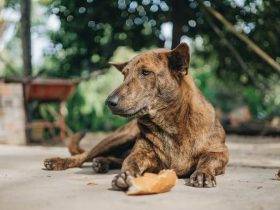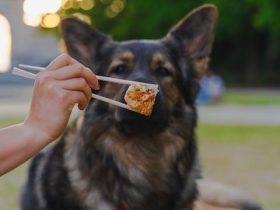Choosing the Best Wet Dog Food
Wet dog food can provide great nutrition and hydration for your pup. However, with so many brands and types available, it can be difficult to pick the best wet dog food. This comprehensive guide will help you understand what to look for in a quality wet dog food and how to choose the perfect wet dog food option for your dog.
Understanding Nutritional Needs
The first step is understanding your dog’s nutritional needs based on their age, size, health, and activity level. This will help narrow down which wet foods are most suitable.
Puppies
Puppies have high caloric and protein needs to support growth and development. Look for wet puppy foods that are:
- Rich in protein (25-30% minimum) from meat sources to build muscles.
- Higher in fat (15-20% minimum) to support a healthy coat and energy levels.
- Fortified with essential vitamins, minerals and fatty acids for proper bone and joint formation.
- Formulated for large or giant breed puppies if applicable to control weight gain.
Adult Dogs
Adult maintenance foods should provide complete and balanced nutrition to support overall health. Opt for wet foods that:
- Have 18-24% protein from meat to maintain lean muscle mass.
- Contain 10-15% fat to meet energy needs.
- Include essential vitamins, minerals, and omega fatty acids.
- Are sized appropriately – more calories per serving for large/giant breeds.
Senior Dogs
Senior diets address age-related health issues and contain:
- 19-22% protein from easily digestible meat sources.
- 10-15% fat to aid digestibility.
- Joint-supporting glucosamine and chondroitin.
- Probiotics for digestive/immune health.
Match protein levels and calories to your senior dog’s activity level to prevent weight gain.
Adjusting Diets as Needs Change
Transition slowly if switching between life stages and monitor your dog for signs they need an adjustment like more protein or calories. Consistency is key for health so stick to one formula.
Evaluating Ingredients
The ingredient list tells you what’s really in the food. Look for these quality components:
Protein Sources
High-quality proteins should be named specifically, like “chicken”, not vague terms like “meat by-products”. Meat should be the first few ingredients.
Carbohydrates
If present, carbs like potatoes, sweet potatoes and peas provide fiber. Avoid fillers higher on the list like corn, wheat and soy.
Fats
Omega fatty acids support skin/coat health. Look for named meat fats versus generic “poultry fat”.
Fruits & Vegetables
Many foods now include wholesome superfoods like pumpkin, spinach or blueberries.
Supplements
Probiotics, glucosamine, vitamins and minerals support various body systems.
Avoid Low Quality Ingredients
Stay clear of unspecified “meat” or “meat by-products”, artificial preservatives and colors, and corn, wheat or soy as primary ingredients which may cause allergies.
Deciding Between Formulas
Once you understand your dog’s needs and researched ingredients, look at specific formulations:
Grain-Free
With the first few ingredients as meat proteins and no grains, these may suit dogs prone to grain sensitivities.
Limited Ingredient Diets
Contain a single protein and carbohydrate source for identifying food sensitivities or allergies.
Hydrolyzed Protein Diets
Especially helpful for dogs prone to food allergies, the protein in these foods is pre-digested.
Raw or Freeze-Dried Diets
Retain enzymes and nutrients found in raw meat by keeping the food refrigerated. May suit dogs with digestive issues.
Veterinarian-Recommended Therapeutic Diets
Prescribed for certain conditions like urinary or gastrointestinal issues and kidney/liver disease. Follow vet guidance.
Factors Beyond Formulation
Consider these other qualities when selecting wet food:
Variety
Rotate flavors/protein sources every few weeks to prevent developing an aversion to any one.
Packaging
Choose air-tight pouches, cans or tubs to keep food fresh longer without preservatives.
Sustainability
Look for brands using renewable resources in production and recyclable/compostable packaging.
Taste Testing
Let your pup sample a small amount to check for acceptance before committing to a full purchase.
Palatability
Food should entice them to eat fully and happily with no issues. Don’t rely on toppers to achieve this.
Price
Higher costs don’t always mean better quality – value varies greatly between brands.
Our Top Wet Food Recommendations
After extensive research, here are some top-rated wet foods ideal for different needs:
For All Life Stages: Wellness Complete Health Wet Dog Food
- Top 5 meat protein ingredients
- Identifiable fruits/veggies
- Balanced nutritional profile at any age
- Variety of flavors
Grain-Free: Merrick Grain Free Real Chicken and Sweet Potato Recipe
- No corn, wheat, soy or grains
- Rich chicken as #1 ingredient
- Nutrient-dense superfood mix
- Natural preservatives, no by-products
Limited Ingredient: Blue Buffalo Wilderness Singles in Duck
- Single protein duck recipe
- Simple limited recipe
- Holistic and healthy ingredients
- Hypoallergenic option
Sensitivity: Hill’s Science Diet Hypoallergenic Hydrolyzed Protein Dog Food
- Hydrolyzed protein
- Prescribed for food sensitivities
- Gentle tummy-friendly formula
- Complements vet care plans
Raw Inspired: Stella & Chewy’s Freeze-Dried Raw Dinner Pouches
- Closely mimics benefits of raw
- High meat content, no cooking
- Nutrient-rich superfoods
- Convenient rehydratable servings
Feeding Tips and FAQs
Here are some additional things to know about feeding wet food:
How much to feed? Portion sizes vary per formula, but generally 1/4 to 1 cup divided into 1-2 meals daily based on your dog’s weight, age and activity level.
Okay to mix with dry? Yes, you can mix in a small amount of wet with dry kibble as long as neither makes up more than about 30% of meals. This adds moisture and variety.
Storage guidelines? Keep food in its original packaging in the fridge for 3-5 days once opened and throw out unused portions. Rotate new cans/pouches in.
Preventing pickiness? Slightly warm small portions at a time and add a touch of broth or water if your dog starts turning up their nose. Vary flavors and brands to avoid aversions.
Digestive upset? Introduce new foods gradually over 5-7 days while mixing with their current diet. Stop feeding if diarrhea, vomiting or gas persists beyond 24 hours. Consult your vet.
Saving money? Freeze leftovers in ice cube trays or single-serve containers and thaw as needed for future meals. Buy larger sizes or subscribe for auto-delivery discounts too.
Is wet food better? Both wet and dry diets can provide complete nutrition when selected appropriately. Wet may be preferred for hydration, dental health or ease of feeding for seniors/pups. choose based on your dog’s individual needs.
With so many brands to choose from, selecting the best wet dog food can feel overwhelming. I hope this guide has provided useful context on nutrition, ingredients and formulation to simplify the decision making process. The key is finding a high-quality option tailored towards your specific dog’s dietary requirements and personal tastes. With the right selection, wet food can be a healthy and satisfying part of caring for your furry best friend.






Leave a Reply